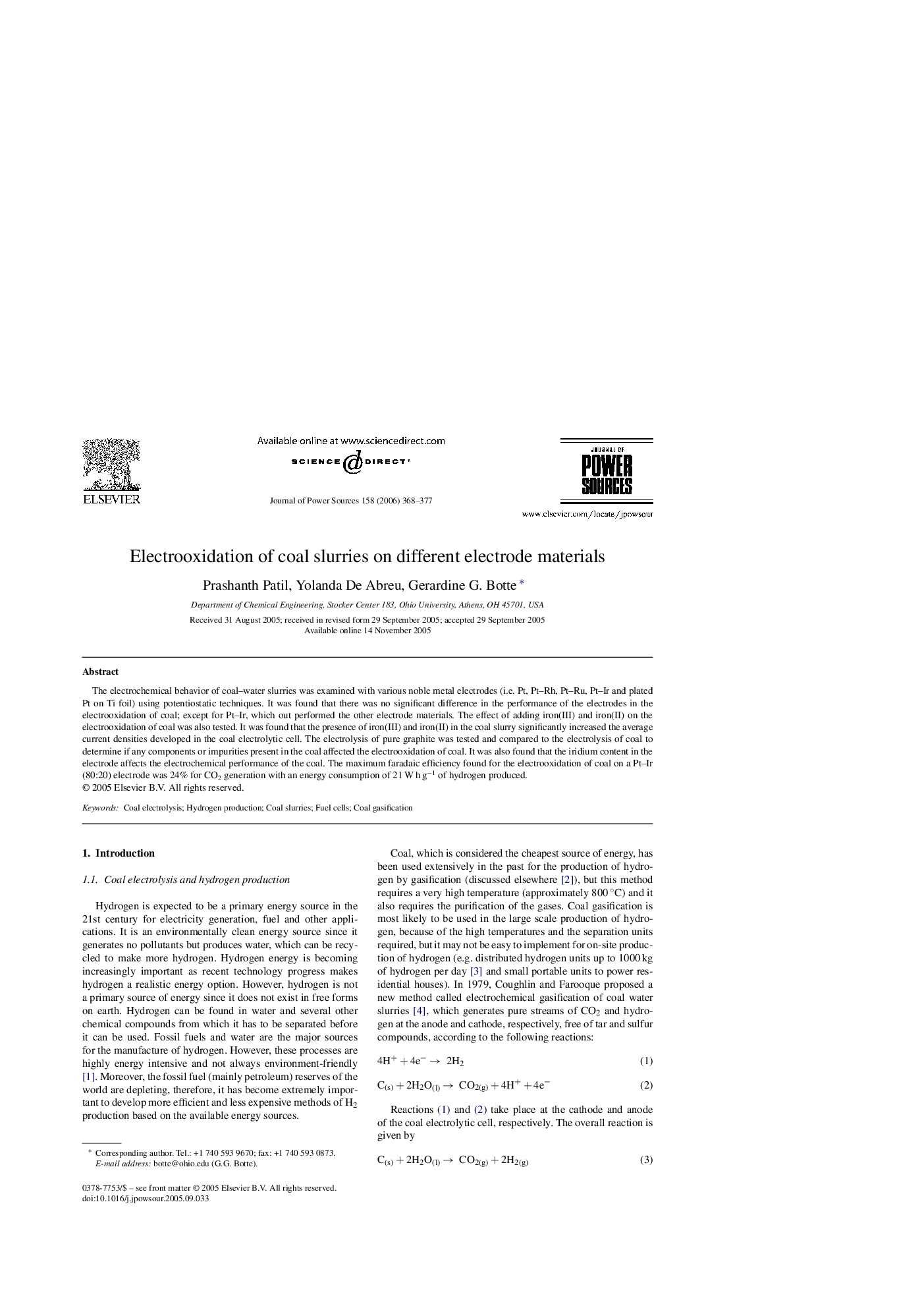| Article ID | Journal | Published Year | Pages | File Type |
|---|---|---|---|---|
| 1287579 | Journal of Power Sources | 2006 | 10 Pages |
The electrochemical behavior of coal–water slurries was examined with various noble metal electrodes (i.e. Pt, Pt–Rh, Pt–Ru, Pt–Ir and plated Pt on Ti foil) using potentiostatic techniques. It was found that there was no significant difference in the performance of the electrodes in the electrooxidation of coal; except for Pt–Ir, which out performed the other electrode materials. The effect of adding iron(III) and iron(II) on the electrooxidation of coal was also tested. It was found that the presence of iron(III) and iron(II) in the coal slurry significantly increased the average current densities developed in the coal electrolytic cell. The electrolysis of pure graphite was tested and compared to the electrolysis of coal to determine if any components or impurities present in the coal affected the electrooxidation of coal. It was also found that the iridium content in the electrode affects the electrochemical performance of the coal. The maximum faradaic efficiency found for the electrooxidation of coal on a Pt–Ir (80:20) electrode was 24% for CO2 generation with an energy consumption of 21 W h g−1 of hydrogen produced.
